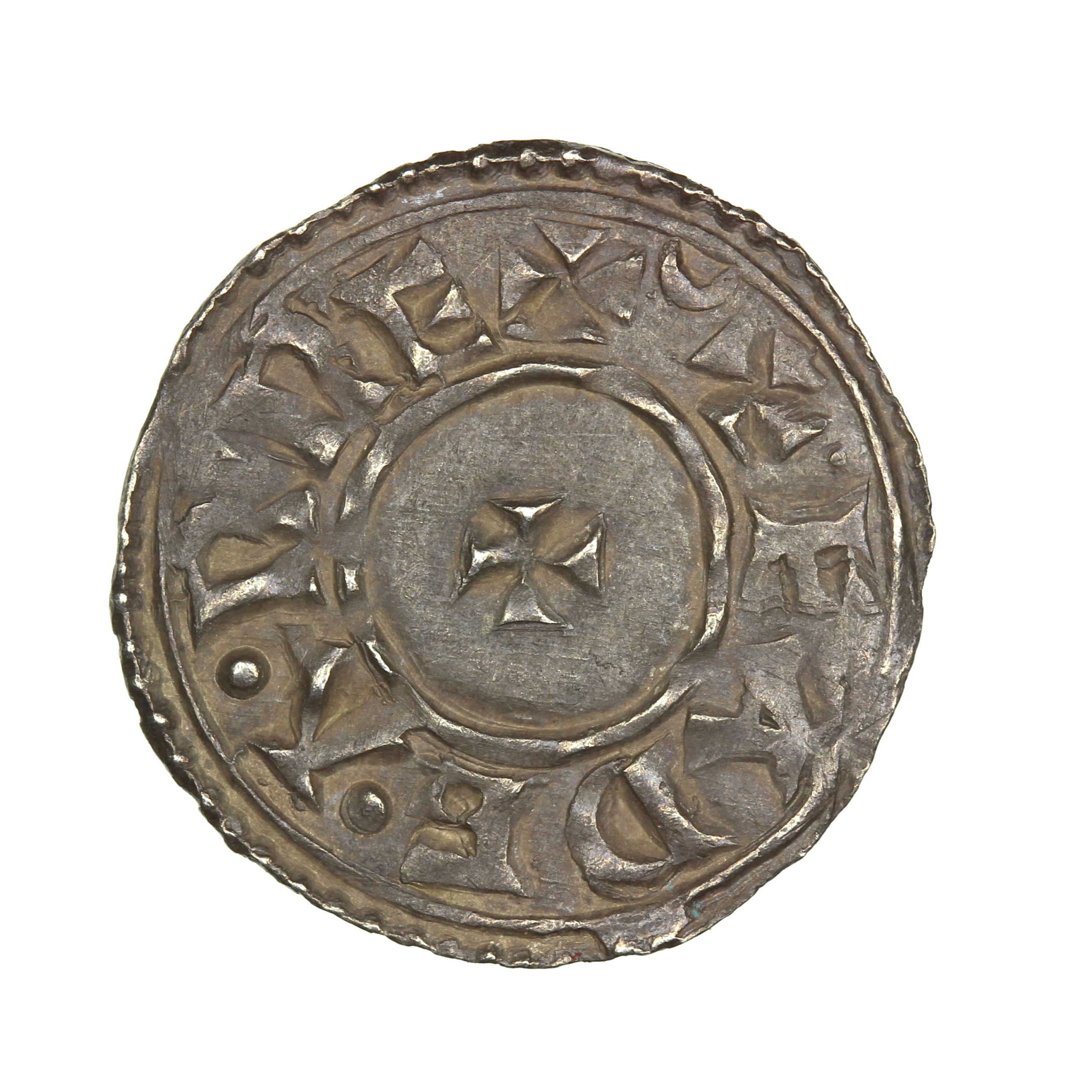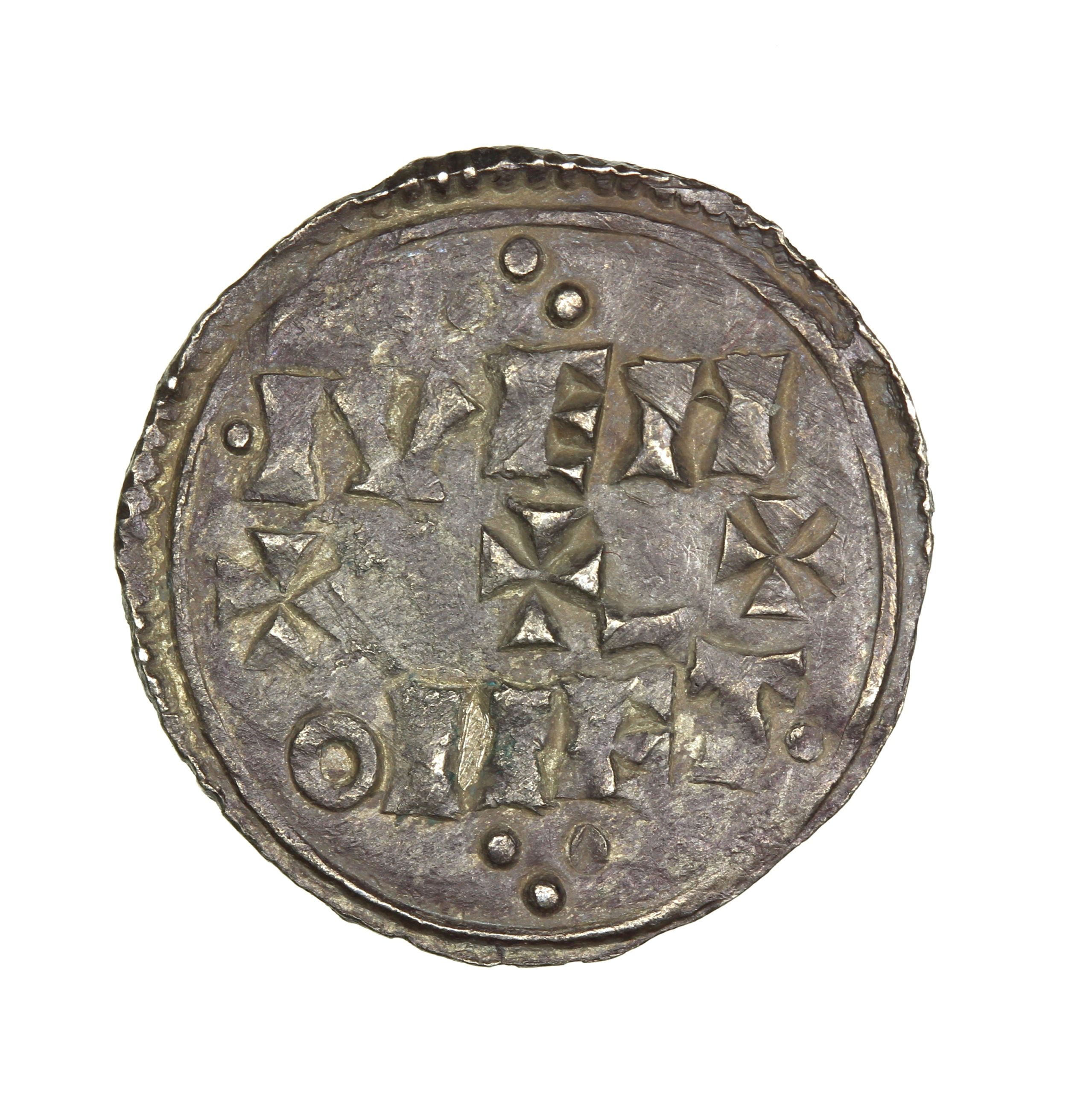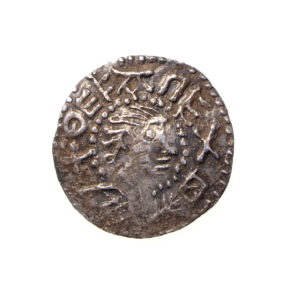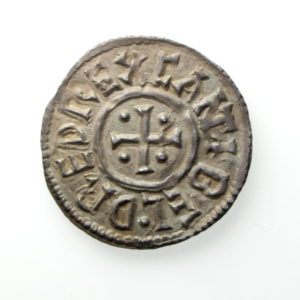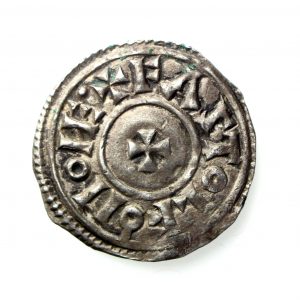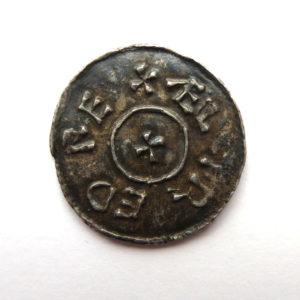Eadgar AD 959-975 Silver Penny Pre Reform Coinage Two Line type ex Tetney Hoard
£950.00
Eadgar AD 959-975 Silver Penny, Pre Reform coinage 2 line type.
Small cross / Moneyers name in 2 lines.
Uncertain North Eastern mint, Moneyer IVE
S1129, 20mm, 1.22g, a pleasing example.
Ex Tetney Hoard, with original label.
Walker, John. ‘A hoard of Anglo-Saxon coins from Tetney, Lincolnshire’. Numismatic Chronicle, 6th ser., 5:3-4 (1947 for 1945), 81-95. Publisher: Royal Numismatic Society.
This coin is part of the Fort collection, a carefully assembled group of English Anglo-Saxon pennies collected for their historical importance and condition. Coins were sourced from reputable dealers and auction houses over some 25 years. Each one comes with the collector’s label, along with any other previous tickets and are sure to sell quickly given their overall high grade and rarity.
Eadgar (959-975): Known as ‘The Peaceful’ – Eadgar’s reign flies in stark contrast to that of his older brother. His reign was indeed stable and peaceable – reflecting to some the very pinnacle of the 10th century English state. Overthrowing many social norms, he was not crowned until 973 – perhaps keen to make a political statement in celebrating the very peak of his power and authority. Uniquely, his third wife Ælfthryth was anointed as Queen alongside him – an unprecedented occurrence. For numismatists his reign is of acute interest – as he instigated a major reform of both weights and measures alongside with the coinage itself. From 972, coins were no longer struck regionally – instead, new types using standardised, centrally produced dies would be issued every few years and the old money called in for re-minting. The use of non-portrait designs was dropped totally, every subsequent coin struck in England bearing the image of the King on its obverse face. His premature death in 975 marked the beginning of a decline which England would take decades to emerge from.
Out of stock

